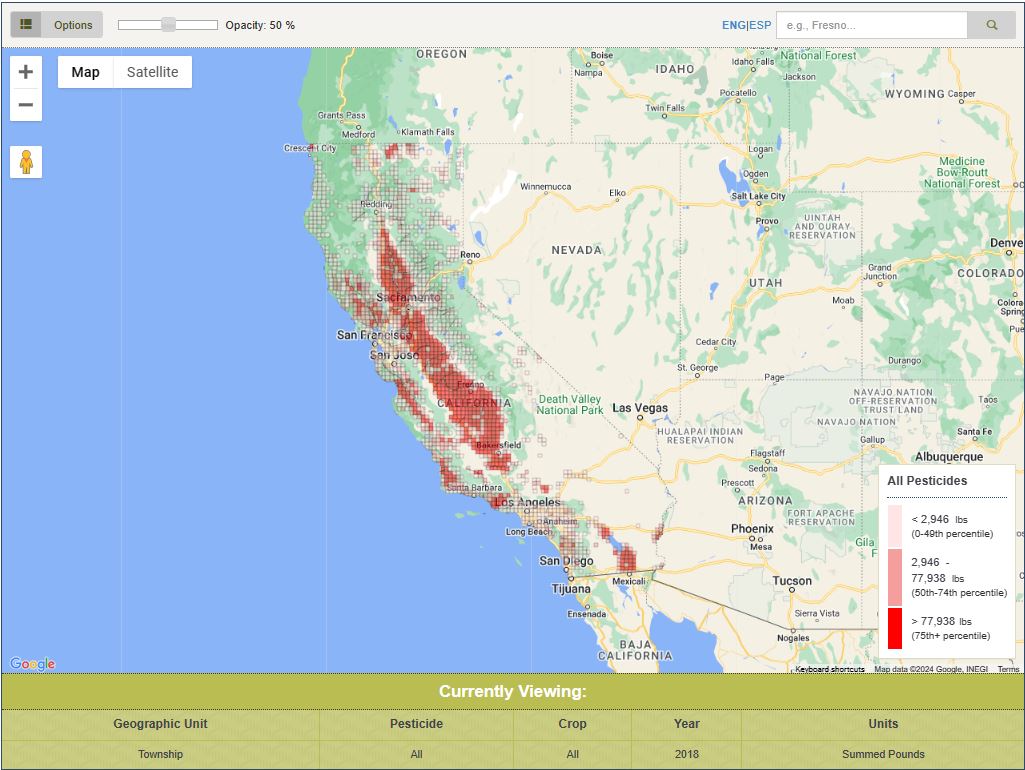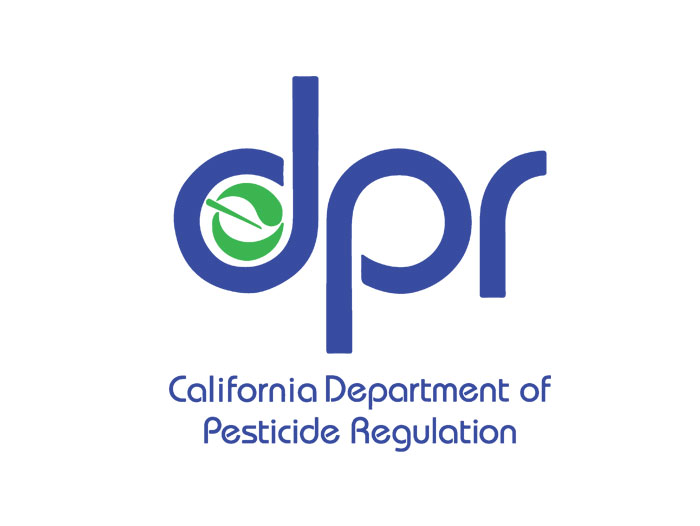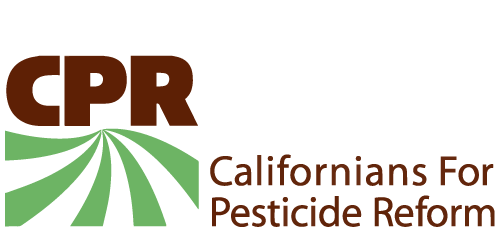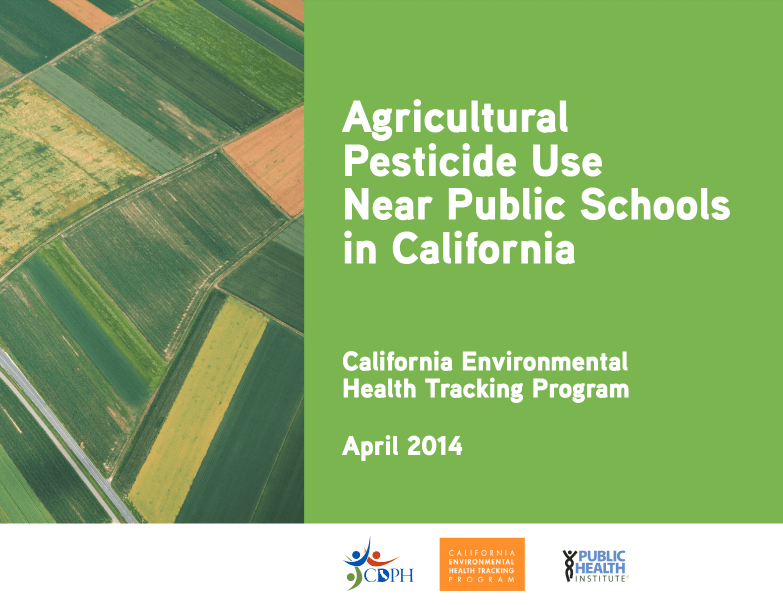Pesticides are used in California to eradicate harmful pests. When improperly used, pesticides can come into contact with the pesticide applicator or nearby residents. Exposure to certain pesticides is linked to poor health outcomes.
Farmers use pesticides to control or eradicate harmful pests that may threaten their crops. According to the California Department of Pesticide Regulation, "pesticides" can includes many kinds of chemicals, both natural and synthetic. Any living organism that causes damage to plants, generates economic loss, or transmits disease may be the target of pesticides.
Pesticides commonly target:
- Insects (insecticides)
- Weeds (herbicides)
- Rodents and small mammals (rodenticides)
- Slugs and snails (molluscicides)
- Mold (fungicides)
- Bacteria and viruses (antimicrobial agents)
California grows much of the produce consumed in the United States, and as such, pesticides are commonly used throughout California, especially in agricultural communities.
Pesticides are hazardous substances designed to harm unwanted pests, and pesticides have the potential to harm humans as well. Health concerns associated with pesticides include neurodevelopmental outcomes, respiratory concerns, cancer and other conditions.
Pesticide Use Across California
Tracking California provides a Pesticide Mapping Tool that displays where agricultural pesticides are used in California, what pesticides are used most often, and how pesticide use has changed over time.

Pesticides and Human Health
Health impacts resulting from exposure to pesticides can happen on an immediate or gradual basis:
Acute exposures and short-term health outcomes
When humans come into contact with a significant amount of pesticides in a short period of time they may experience health symptoms that are obvious and immediately discernible. This is often referred to as an acute exposure. Short-term (acute) health effects may include nausea, skin irritations, wheezing or shortness of breath, and stomach pain, among other transient health effects. Severe cases of pesticide exposure can even result in death.
Chronic exposures and long-term health outcomes
There are also health concerns associated with chronic exposures- repeated exposure to very low doses of pesticides over a longer period of time. There may be no immediate signs and symptoms that someone has been exposed to a low dose of pesticides, but such exposures may still be harmful to health. Long-term (chronic) health effects from pesticide exposure include cancer, neurological impacts, adverse reproductive outcomes, declines in cognitive function, and other long-lasting health effects.
More information on the health impacts of pesticides is available from the California Department of Pesticide Regulation and the U.S. Environmental Protection Agency.
Who is Vulnerable to Pesticides?
Pesticides can impact anyone who comes into contact with them. Harmful exposure to pesticides can occur when people breathe, touch, or ingest pesticides.
These exposures may occur during or after a pesticide application, and pesticides can travel away from their intended target via drift. Some pesticides can remain active in the environment long after they are applied.
Children, in particular, are susceptible to pesticide exposure and their negative health effects. Reasons include:
- Behavior: Common childhood behaviors - such as spending more time outdoors, playing on the ground, and putting objects in their mouths - can increase a child's risk for pesticide exposure.
- Physiological development: Children's bodies are rapidly maturing, and they are more vulnerable to interruptions or delays in key developmental milestones.
- Body size: Relative to their weight, children eat, drink, and breathe more than adults, increasing their exposure on a per-pound basis.
Individuals who apply pesticides are at greater risk for exposure due to pesticide spills, airborne drift from the pesticide's intended target, or inappropriate handling of pesticides. Communities nearby areas where pesticides are frequently used also have an elevated risk of pesticide exposure.
Women who are or may become pregnant and their fetuses are at greater risk for harmful health effects from pesticides. Individuals who apply pesticides, or spend time near places where they are applied, also have an increased risk of pesticide exposure compared to the general population.
The risk of pesticide exposure is not equal throughout California. Our 2014 report found that Hispanic school children were 91% more likely to attend a school near high pesticide use compared to white children.
Pesticides Monitoring and Regulation
Federal, state, and local regulations and regulatory agencies play an important role in ensuring safe pesticide use in California.
The Federal Insecticide, Fungicide, and Rodenticide Act requires that all pesticides sold or distributed in the United States be registered by the U.S. Environmental Protection Agency (EPA). The Federal Food, Drug, and Cosmetic Act requires the EPA to establish a maximum permissible level for pesticide residues allowed on food for human consumption and animal feed.
At the state level, the California Department of Pesticide Regulation regulates the sales, use, monitoring, and enforcement of pesticides used in California. Existing regulations determine how pesticides are tested for safety, how pesticide residues on food are monitored, how pesticide applicators and the public are kept safe, and how pesticide use and illness data are reported. The California Department of Pesticide Regulation recommends a stepwise approach called integrated pest management (IPM). Using an IPM method, pesticides are only used when needed and in combination with other strategies for more effective long-term control of pests.
In California, County Agricultural Commissioners (CACs) serve as the primary enforcement agents for state pesticide laws and regulations. CACs are often the best resource for understanding local pesticide regulations, as permitted uses may vary by county.
Pesticide Related Projects
Pesticide Publications
Residential Agricultural Pesticide Exposures and Risks of Preeclampsia [2018] Shaw GM, Yang W, Roberts EM, Aghaeepour N, Mayo JA, Weber KA, Maric I, Carmichael SL, Winn VD, Stevenson DK, English P
Residential Agricultural Pesticide Exposures and Risks of Spontaneous Preterm Birth [2018] Shaw GM, Yang W, Roberts EM, Kegley SE, Stevenson DK, Carmichael SL, English PB
Environmental Health Tracking Improves Pesticide Use Data to Enable Research and Inform Public Health Actions in California [2017] Richardson M, Madrigal DS, Wilkie A, Wong M, Roberts EM
Residential agricultural pesticide exposures and risks of selected birth defects among offspring in the San Joaquin Valley of California. [2016] Carmichael SL, Yang W, Roberts EM, Kegley SE, Brown TJ, English PB, Lammer EJ, Shaw GM
Early pregnancy agricultural pesticide exposures and risk of gastroschisis among offspring in the San Joaquin Valley of California. [2014] Shaw GM, Yang W, Roberts EM, Kegley SE, Padula A, English PB, Carmichael SL
Residential agricultural pesticide exposures and risk of selected congenital heart defects among offspring in the San Joaquin Valley of California [2014] Carmichael SL, Yang W, Roberts EM, Kegley SE, Padula AM, English PB, Lammer EJ, Shaw GM
Residential agricultural pesticide exposures and risk of neural tube defects and orofacial clefts among offspring in the San Joaquin Valley of California [2014] Yang W, Carmichael SL, Roberts EM, Kegley SE, Padula AM, English PB, Shaw GM
Hypospadias and residential proximity to pesticide applications [2013]
Carmichael SL, Yang W, Roberts EM, Kegley SE, Wolff C, Guo L, Lammer EJ, English P, Shaw GM
Other Pesticide Resources

California Department of Pesticide Regulation (CDPR)
CDPR regulates, monitors, and reports on pesticide use in California

U.S. EPA
The U.S. EPA established federal pesticide regulations

The National Institute for Occupational Safety and Health (NIOSH) Pesticide Illness & Injury Surveillance
The NIOSH Pesticide surveillance Program monitors trends in acute pesticide-related illness and injury

National Institute of Environmental Health Sciences (NIEHS)
NIEHS provides factsheets and resources on pesticides and health

Californians for Pesticide Reform (CPR)
CPR is a statewide coalition of more than 190 organizations, founded in 1996 to fundamentally shift the way pesticides are used in California

